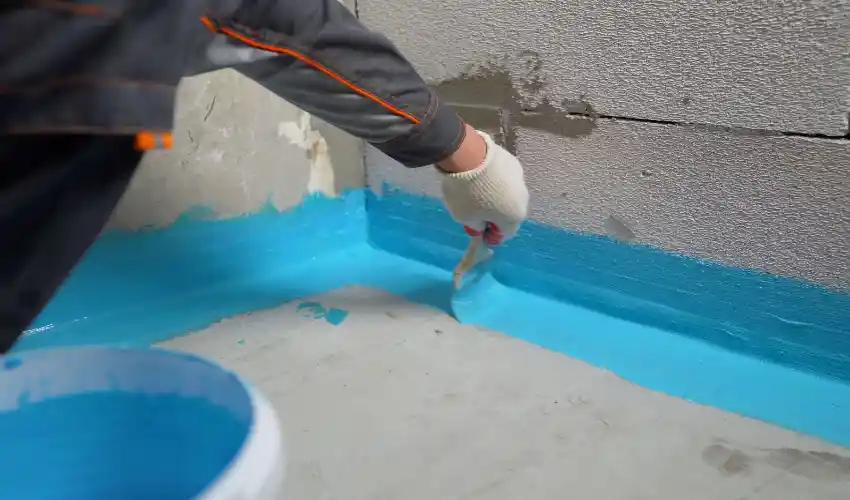From leaks and flooding to mold and structural deterioration, water infiltration can cause significant problems if not addressed promptly. Effective inside basement waterproofing solutions not only prevent damage but also protect your home’s value, enhance comfort, and ensure a safe living environment. Understanding the importance of waterproofing and exploring the best strategies is essential for every homeowner.
Why Inside Basement Waterproofing Matters
Basements are prone to water issues due to their location below ground level. Rainwater, groundwater, and plumbing leaks can all seep into the basement, creating damp conditions. Over time, moisture can lead to structural damage, musty odors, mold growth, and health hazards for residents. Inside basement waterproofing is a proactive measure that prevents these problems, maintaining a dry, safe, and functional space. Investing in proper waterproofing also increases property value, making it an essential consideration for homeowners looking to protect their investment. If you are looking for a Virginia Beach roofing company contact Fett Exterior Solutions.
Common Causes of Basement Water Problems
Before implementing waterproofing solutions, it is important to identify the common causes of water problems in basements. Some of the main contributors include:
- Hydrostatic Pressure: Water accumulating around the foundation can push against basement walls, causing leaks and cracks.
- Poor Drainage: Inefficient exterior drainage can redirect water toward the foundation, leading to seepage.
- Cracks in Foundation: Small cracks and gaps in walls or floors allow water to penetrate the basement.
- Plumbing Issues: Leaks from pipes, sump pumps, or appliances can increase moisture levels inside the basement.
Understanding these causes allows homeowners to choose the right inside basement waterproofingmethods that target the root of the problem.
Top Inside Basement Waterproofing Solutions
Several effective strategies can help prevent water infiltration and ensure long-lasting protection.
- Interior Drainage Systems: Installing an interior drainage system, such as a French drain or trench system, helps redirect water that enters the basement toward a sump pump. This method effectively prevents water from pooling and causing damage to walls or flooring.
- Sump Pumps: A high-quality sump pump works alongside an interior drainage system to remove excess water from the basement. Modern sump pumps are reliable, energy-efficient, and essential for homes in areas prone to flooding or heavy rainfall.
- Crack and Wall Repair: Sealing cracks and repairing damaged walls is crucial for waterproofing. Specialized epoxy injections or polyurethane foams can fill gaps and prevent water seepage. Regular inspection ensures that any new cracks are promptly addressed.
- Waterproof Coatings: Applying waterproof coatings or sealants to basement walls and floors provides an additional layer of protection. These coatings are designed to repel water, resist mold growth, and strengthen the foundation against moisture penetration.
- Dehumidifiers and Ventilation: Controlling humidity is key to maintaining a dry basement. High-performance dehumidifiers reduce moisture levels, while proper ventilation ensures airflow, preventing condensation and mold formation.
Benefits of Professional Inside Basement Waterproofing
While some homeowners attempt DIY solutions, professional basement waterproofing services offer comprehensive and lasting results. Experienced contractors assess the property, identify specific risks, and implement solutions tailored to the home’s unique needs. Professional waterproofing ensures:
- Long-term Protection: Properly installed systems prevent recurring water problems.
- Increased Property Value: A dry, well-maintained basement enhances resale potential.
- Health and Safety: Reducing mold and mildew growth safeguards residents’ health.
- Peace of Mind: Homeowners can enjoy their basement without worrying about water damage.
Maintenance and Ongoing Care
Even after effective waterproofing, regular maintenance is essential. Homeowners should:
- Inspect sump pumps and drainage systems annually.
- Monitor walls and floors for new cracks or leaks.
- Keep gutters, downspouts, and exterior drainage clear of debris.
- Maintain humidity levels within recommended ranges.
Routine care extends the life of waterproofing solutions and minimizes the risk of unexpected damage.
Conclusion
Investing in effective inside basement waterproofing solutions is a proactive way to protect your home from water damage, mold, and structural issues. By combining interior drainage systems, sump pumps, crack repair, waterproof coatings, and humidity control, homeowners can maintain a safe, dry, and comfortable basement. Professional services provide expertise, long-lasting protection, and peace of mind, ensuring that your basement remains a valuable and functional part of your home for years to come. Don’t wait until water damage occurs—take action today to secure lasting protection for your basement and your home.
